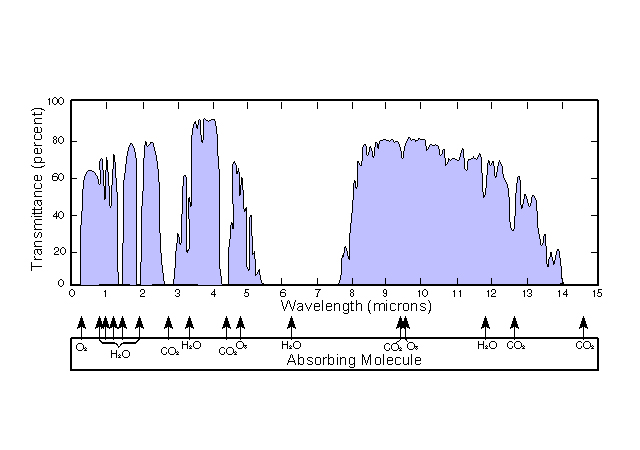Most of the radiation emitted by objects that can be perceived by infrared detectors mostly passes through the atmosphere. The atmosphere is composed of various gases, dust particles and water vapor. The main gases are N2, O2, Ar, and other gases only account for less than 0.1% of the total volume. The three gases have one characteristic: they do not absorb infrared wave that bellows 15μm. This kind of infrared radiation can easily penetrate the atmosphere and be perceived by infrared detection equipment. Therefore, the working wavelength of infrared detection equipment is usually below 15 μm.

However, there still exists gases with infrared radiation below 15μm that can be absorbed by the atmosphere, such as H20, CO2, O3, CH4 etc. It is found that at the wavelength range of 0.8~15μm, the atmosphere has three bands with weak infrared absorption, namely 1-3μm, 3~5μm, 8~14μm. So these three bands are also called atmospheric windows. In these three wave bands, the atmosphere has good transmission characteristics for infrared radiation, so that the infrared radiation of objects can be easily recognized by infrared detection equipment. And between these wave bands, the atmosphere is almost opaque to infrared radiation. At present, the bands used by infrared systems are mostly limited to the above atmospheric windows.
When selecting the infrared thermal imager, its use place should be considered. When the target of detection is between the aircraft and the ground, between the aircraft and the aircraft, or between two points on the ground, the absorption of infrared ray by the atmosphere is different. Generally speaking, 1-3μm is mainly used in high-temperature target and astronomical detection, and also in ground observation in the near future. 8-14 μm atmospheric window is suitable for observing ground targets, while 3-5μm window is suitable for detecting distant aerial targets in high temperature and humidity areas.
Go Top